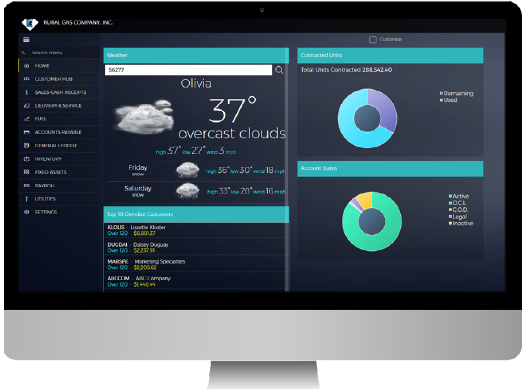Have you ever wanted to just click a few buttons and have all your fuel delivery routes be populated quickly and efficiently, ready to be sent to your driver electronically? Well, there is a module for that.
RCC’s Dispatch Manager Module for FDS
 Our Dispatch Manager (DM) allows for a quick and efficient way to populate and optimize routes. It then sends those routes electronically to the driver’s MOGO handheld device to begin delivering. As of service pack 10 inside our FDS Version 10 release, the populating process has become quicker and more efficient than ever before. However, to make the module work for you, you will need to make sure you are working with clean data. No, I am not talking about dusting your hardware; though that might be a good idea. I am referring to making sure that your customers’ locations are setup properly so that the Dispatch Manager does all the forecasting work for you.
Our Dispatch Manager (DM) allows for a quick and efficient way to populate and optimize routes. It then sends those routes electronically to the driver’s MOGO handheld device to begin delivering. As of service pack 10 inside our FDS Version 10 release, the populating process has become quicker and more efficient than ever before. However, to make the module work for you, you will need to make sure you are working with clean data. No, I am not talking about dusting your hardware; though that might be a good idea. I am referring to making sure that your customers’ locations are setup properly so that the Dispatch Manager does all the forecasting work for you.
Optimizing your Data for Degree Days
If your company uses degree days, one of the first steps to making sure you’re forecasting correctly would be to run a distribution list in map form and look to see where all your customers are located. Are they all within one weather region or do you have them spread out in different regions (such as valleys and mountains) which might have different weather patterns? That alone can throw off forecasting between customers if the degree day region selected is not relevant to their physical location.
Optimizing your Data for kfactors
There are also different degree day systems that play a factor in forecasting. If a location has a geo-thermo heat pump, their degree day base is different than say a normal HVAC system. Another area that can cause inefficiencies can be the customer’s kfactor. A kfactor is an estimate of how many degree days it takes for the location to use a gallon of gas. When a new customer is setup with degree days, it will take a minimum of 3 deliveries to accurately calculate their individual kfactor based on historical usage.
In the meantime, RCC has a table that will hold the default kfactor value to use until the first 3 deliveries have been made. Making sure the default kfactor is setup and accurate for your regions is key in forecasting for those customers that do not have enough history to calculate from. Heating pattern changes can also cause forecasting discrepancies. If a customer adds or removes square footage to their house, changes their heating source, adds an additional heating source, etc. those are all things that need to be taken into consideration when forecasting their kfactor. There is an area within location maintenance that gives you the option to ignore deliveries prior to any changes a customer made. Now that you have taken the time to clean up the data used to forecast deliveries, let RCC’s Dispatch Manager module handle the rest with optimizing in the best order based on the customer’s location delivery address. If you would like more information on how to verify you have the right degree day regions, kfactor default settings, and to make your data work for you please reach out to your favorite fuel support person. For those of you that have not yet upgraded to v10 this would still apply to you. Taking the time now to make sure your data is clean will make your upgrade to v10 that much easier.
 Toni Kurfman, Fuel Support
Toni Kurfman, Fuel Support
Toni has been on the RCC Fuel Support Team for one year. She lives in Palmyra, MO with her husband and seven kiddos. She enjoys skeet shooting and spending time outdoors with her family.
(This article was originally included in RCC’s Summer Newsletter. You can read the entire newsletter and view other great resources by logging in to our Member Login area. If you are not a member yet, it is easy to register.)
